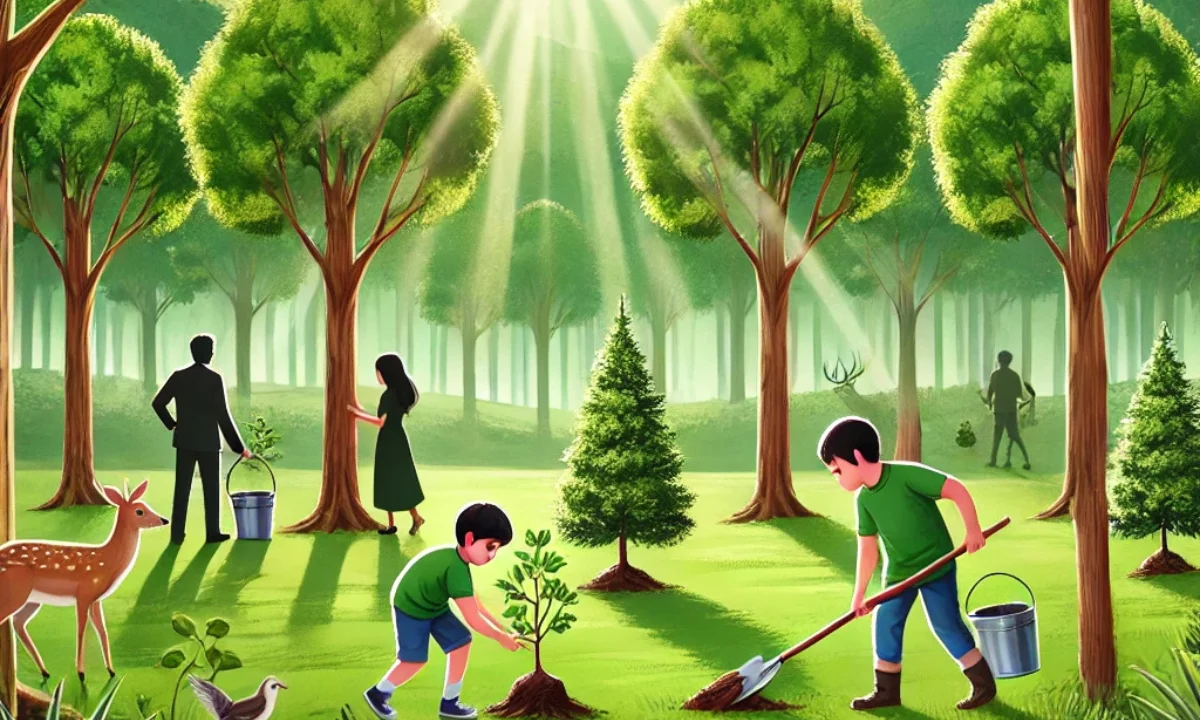Introduction
How to Save Trees – Trees are the lungs of our planet, providing oxygen, absorbing carbon dioxide, and supporting biodiversity. Unfortunately, deforestation, urbanization, and industrial activities are causing rapid tree loss. It is crucial to take action to protect and preserve trees for future generations. In this article, we will explore practical ways to save trees, the importance of tree conservation, and how individuals and communities can contribute. ( How to Save Trees )
Importance of Trees
1. Environmental Benefits
- Trees absorb carbon dioxide and release oxygen, essential for human survival.
- They prevent soil erosion and maintain water cycles.
- Forests act as carbon sinks, mitigating climate change.
- Trees provide shade and reduce the urban heat effect.
2. Economic Benefits
- Trees boost property values and attract tourism.
- They provide raw materials for industries like paper, furniture, and medicine.
- Trees offer employment opportunities in forestry and conservation projects.
3. Health and Social Benefits
- Trees improve mental health and well-being.
- They purify the air by absorbing pollutants.
- Green spaces encourage physical activity and social interactions.
Read More – How to Make a Time Table for Daily Routine for Students
How to Save Trees: Practical Steps
1. Plant More Trees
- Participate in afforestation and reforestation programs.
- Choose native species for better adaptability and growth.
- Encourage schools and workplaces to organize tree-planting events.
2. Reduce Paper Consumption
- Use digital documents instead of printed copies.
- Opt for recycled paper products.
- Print on both sides of the paper to reduce waste.
3. Avoid Deforestation
- Support sustainable logging and certified wood products.
- Advocate for forest conservation laws.
- Reduce land clearance for agriculture and urbanization.
4. Protect Existing Trees
- Water and mulch trees to maintain their health.
- Report illegal tree cutting and deforestation activities.
- Support community-led tree conservation initiatives.
5. Promote Sustainable Practices
- Use eco-friendly products that do not contribute to deforestation.
- Reduce meat consumption, as livestock farming leads to forest clearance.
- Practice composting to reduce landfill waste, indirectly helping trees.
6. Support Organizations Working to Save Trees
- Donate to environmental NGOs focused on reforestation.
- Volunteer for tree-planting and conservation projects.
- Spread awareness about deforestation and its consequences.
7. Educate and Raise Awareness
- Teach children the importance of trees in schools.
- Organize tree-awareness campaigns in communities.
- Use social media to share information about tree conservation.
Community Initiatives for Tree Conservation
1. Urban Green Spaces
- Develop community gardens and parks.
- Implement rooftop and vertical gardens.
2. Corporate Social Responsibility (CSR)
- Encourage businesses to adopt tree conservation policies.
- Promote green offices with indoor plants and paperless operations.
3. Government Policies and Regulations
- Support policies that protect forests and green areas.
- Advocate for stricter penalties for illegal logging.
Conclusion
Saving trees is not just the responsibility of governments and organizations—it is a collective effort. Every individual can contribute by making small yet impactful changes in their daily lives. Whether it is planting more trees, reducing paper usage, or advocating for green policies, every action counts. Together, we can ensure a greener and healthier planet for future generations. ( How to Save Trees )
By following these practical steps and spreading awareness, we can all play a role in saving trees and protecting our environment.

1 thought on “How to Save Trees: A Comprehensive Guide”